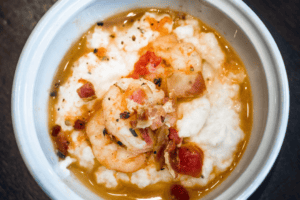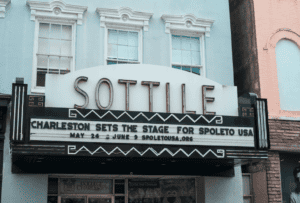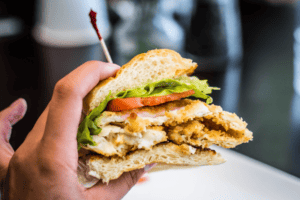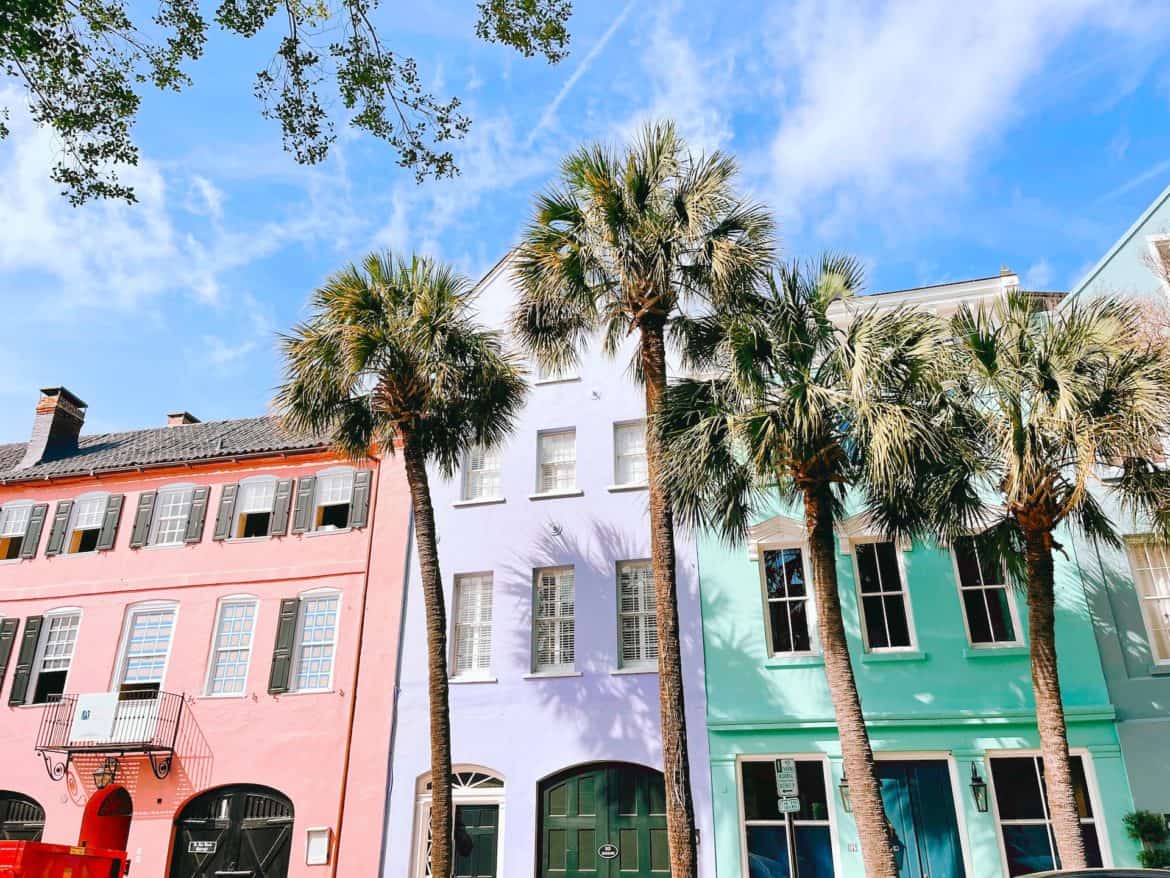In Charleston, food intertwines with stories of resilience and transformation. As we navigate through the city’s French Quarter on the Charleston Food Tour, we’re not just sampling dishes; we’re exploring a narrative shaped by pirates, pandemics, wars, and natural disasters. Each forkful of Carolina-style BBQ, each spoonful of Shrimp & Grits, is a chapter in Charleston’s history book, narrating tales of survival and innovation.
But it’s not just about the food. This culinary voyage is a deep dive into the Lowcountry’s unique flavor palette, where traditional Southern cuisine melds with African and indigenous influences. The benne seeds, collard greens, and other classic ingredients you’ll encounter are not mere components of a recipe; they are symbols of the city’s diverse cultural roots.
One very special stop from our tour is the Historic Charleston City Market, where you’ll discover more than just mouthwatering bites. This landmark embodies Charleston’s culinary heritage. Here, the city’s history as a key player in the African slave trade intersects with local cuisine, leaving an indelible mark on what we eat today.
Charleston’s food scene is a complex blend of history, culture, and innovation. From savoring the city’s oldest barbecue to indulging in handmade ice cream, every stop on our tour is a testament to Charleston’s culinary prowess. And, of course, there’s our Secret Dish, carefully chosen to encapsulate the best of Charleston’s flavors.
Charleston City Market: A Centerpiece of Culinary Heritage
The Charleston City Market’s story began in 1788 when Charles Cotesworth Pinckney and his neighbors ceded land along a canal off East Bay Street to establish a public market. This act set the stage for a market that would deeply intertwine with Charleston’s history and culture. The land was deeded back to the city in 1804, marking the permanent establishment of the market in the heart of Charleston. Throughout its existence, the market has been a space where enslaved people and free individuals mingled, with African and indigenous ingredients sold at stalls significantly influencing local cuisine.
Originally comprising low buildings or sheds stretching from Market Hall to the waterfront, built between 1804 and the 1830s, the market has undergone numerous changes. These sheds initially hosted meat, vegetable, and fish vendors. The Market Hall, completed in 1841 and designed by Edward Brickwell White, paid homage to the Temple of the Wingless Victory in Athens and was originally used for meetings and social functions, with vendors located beneath the hall. Over the years, the market survived several disasters, including fires, tornadoes, earthquakes, hurricanes, and even bombardment.
Since the 1970s, the original sheds and the surrounding neighborhood have transformed into a vibrant hub of small and unique shops. The market is particularly renowned for hosting over 50 sweetgrass basket weavers, a tradition emblematic of Charleston. A significant refurbishment in 2010 and 2011 revamped the market, especially the Great Hall, now an air-conditioned space housing vendors and offering a respite from the Lowcountry’s humidity. Today, the market is a bustling center housing 300 artisans, vendors, and craftspeople, and it stands as a testament to Charleston’s resilience and cultural richness.

The Market’s Historical Significance and Evolution
The Charleston City Market’s story begins in 1788, a narrative steeped in the city’s history and reflective of its cultural shifts. Originally established when Charles Cotesworth Pinckney and his neighbors ceded land along a canal off East Bay Street, the market was envisioned as a public space, a hub for commerce and social interaction. This initial act of benevolence set in motion the market’s enduring legacy at the heart of Charleston.
However, the market’s journey was not without its challenges. In its early years, the market experienced a brief period of reversion to its original owners but was permanently established as a public market in 1804. This reestablishment marked a significant turn, embedding the market as a staple in Charleston’s daily life. Throughout the 19th century, it became a bustling hub where farmers and plantation owners sold beef and produce. It also served as a social meeting place, witnessing a diverse mix of people, including enslaved individuals and free citizens, who mingled and traded within its bounds.
The architectural landscape of the market also underwent significant transformations, most notably with the construction of the current Market Hall in 1841. Designed by Edward Brickwell White in the Greek Revival style, this structure replaced a previous building destroyed by fire, adding a distinctive architectural flair to the market. Yet, the market was not immune to disasters. It withstood numerous fires, earthquakes, tornadoes, and hurricanes, each event shaping its resilience. The most notable of these was a tornado in 1938 that caused extensive damage.
The market’s fortunes waxed and waned with Charleston’s economic tides. During periods of economic downturn, it became a seedy district, but as tourism revived the city’s economy, the market transformed into a key attraction for visitors. This revival was marked by significant renovations in the late 20th and early 21st centuries, including a major refurbishment in 2010, culminating in the reopening of the market in 2011. The renovated Great Hall, now an enclosed and air-conditioned space, emerged as a highlight, drawing locals and tourists alike.

Architectural Evolution of the Charleston City Market
The Charleston City Market’s architectural journey is a reflection of the city’s broader history, marked by periods of transformation and resilience. Originally established in the late 18th century with Charles Cotesworth Pinckney’s donation of land, the market’s initial structures were simple and functional, designed primarily for trading purposes. These early buildings, primarily sheds stretching from the waterfront to Market Hall, catered to meat, vegetable, and fish vendors. However, the market’s architectural significance was elevated in 1841 with the construction of Market Hall. Designed by Edward Brickwell White in the Greek Revival style, this new building replaced a previous structure destroyed by fire. Its design, inspired by the Temple of the Wingless Victory in Athens, introduced a distinguished architectural style to the market, transforming it into a notable Charleston landmark. This period marked the beginning of the market’s transition from a purely commercial space to a symbol of the city’s architectural heritage.
Over the years, the Charleston City Market has witnessed numerous challenges, including natural disasters and economic fluctuations, yet it has consistently emerged stronger and more vibrant. The late 20th and early 21st centuries saw significant changes, particularly in the 1970s when the market and its surrounding neighborhood began to transform into a hub of unique shops and boutiques. This era brought a modern flair to the market while preserving its historic charm. The most notable modern renovation occurred in 2010, leading to the 2011 reopening of the market. This refurbishment modernized the Great Hall, making it an enclosed, air-conditioned space that provided a comfortable environment for shoppers.
The Art of Sweetgrass: Charleston’s Basket Weaving Legacy
The art of sweetgrass basket weaving in Charleston is a historic and cultural gem, dating back to the 17th century with the arrival of West African slaves. This unique craft, passed down through generations, especially within the Gullah community, is more than just a traditional skill—it’s a story of resilience and cultural preservation.
Initially used for practical purposes like winnowing rice, these baskets have become symbolic artworks. The intricate coiled weaving technique, a West African tradition, involves bundling dried sweetgrass into circular designs, using palmetto fronds for binding. Each basket is a unique creation, reflecting the personal style of its artisan.
The Charleston City Market stands as the epicenter of this tradition, housing over 50 sweetgrass artisans. Notable figures like Mary Jackson have gained recognition for their work, with some pieces even reaching prestigious platforms like the Smithsonian American Art Museum. Today, sweetgrass basket weaving remains a cherished part of Charleston’s heritage, attracting collectors and enthusiasts to the Lowcountry.
Beyond the Market: Other Tour Stops
In addition to exploring the Charleston City Market, our top seller Charleston Food Tour also leads you to other gems. These include South Carolina-style BBQ joints, where you can savor the oldest barbeque in the world, and places offering fresh local seafood, showcasing the best of what the Lowcountry has to offer. A stop for handmade ice cream crafted from locally sourced ingredients provides a delightful sweet treat. Each of these stops, along with our special Secret Dish, uniquely contributes to the very complete overview of Charleston’s gastronomy.

Charleston’s food scene is incredibly varied and vibrant, perfect for every palate. From breakfast to dinner, each restaurant and eatery presents a unique aspect of Charleston’s heritage. Whether you’re exploring the City Market or venturing into other local dining hotspots, the Charleston Food Tour invites you to experience this diverse gastronomic landscape. Join us to taste the flavors that define Charleston and immerse yourself in the city’s rich history. Check out the official Charleston Food Tour page and book your dates here.
